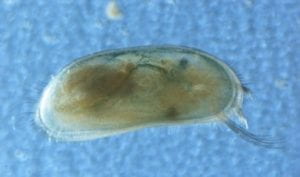Species co-occurrence is a pattern fundamental to obtaining a better understanding of lots of ecological processes. As a pattern, it is simply a measurement of the frequency at which two or more species co-occur among a set of spatial locations (study sites, plots, ecological communities) and an assessment of whether that frequency is essentially random, positive, or negative. Random co-occurrence simply means that the two species are distributed randomly (or independently) of one another; note that this does not necessarily mean that each species itself is randomly distributed (in nature most species do not have random distributions), rather random co-occurrence describes the distribution of one species relative to another. Positive co-occurrence signifies that two species occur together at more locations than would be expected if each were randomly distributed relative to the other species. Negative co-occurrence (although it may sound like an oxymoron) is just the opposite; two species co-occurring at fewer locations than expected if each were randomly distributed relative to the other species. Thus, a pair of species could potentially have a random, positive, or negative association – and the type of association can indirectly indicate (or provide supporting evidence for) the ecological process(es) or factor(s) leading to the particular pattern of co-occurrence.
There are various methods for analyzing species co-occurrence. Many of the methods can be distinguished as being either a “pair-wise” method or a “matrix-level” method. The main difference is that in the former, the co-occurrence between two species of a pair is assessed, in the latter, co-occurrence is measured as a property of an entire species presence-absence matrix. The analysis of species presence-absence matrices has a long history in Ecology and Biogeography dating back to at least the 1980s. Often that research has entailed testing for patterns of species nestedness (assemblages of species as non-random nested subsets of one another) which isn’t a direct analysis of species co-occurrence per se. To date, I have mostly worked on developing methods for analyzing pair-wise co-occurrence patterns (see Veech_2006_J_Biogeography, Veech_2013_GEB, Veech_2014_J_Biogeography, Griffith_et_al_2016).
A particular pattern of species co-occurrence (positive or negative) does not necessarily entail any one particular process or factor. Pattern alone does not unequivocally indicate process. However, co-occurrence patterns are certainly manifested from the process of species coexistence and thus co-occurrence patterns are highly relevant to understanding the mechanisms by which species either can or cannot coexist. The study of species coexistence is at the very heart of a lot of other topics that ecologists investigate, including species diversity, niche overlap, character displacement, predator-prey relations, trophic dynamics, competition, and population dynamics. From my own experience in analyzing species co-occurrence, I think most species (even of the same taxonomic group and/or functional guild) are distributed randomly of most others. In a few instances, strong competitive interactions decrease the rate of co-occurrence. More often though, shared habitat preferences and the lack of strong antagonistic interactions, lead to positive co-occurrence patterns.
As an empirical example of my research on co-occurrence, my colleague Okan Külköylüoğlu (Abant İzzet Baysal University in Bolu, Turkey) and I have conducted a study of co-occurrence in ostracods inhabiting a wide variety of aquatic habitats in Turkey. Over a 15 year period, Okan compiled an impressive dataset of > 100 species and about 3,000 sampling sites. Our analysis has revealed that positive associations are much more common than negative associations and factors such as salinity and water temperature are primarily responsible. Ostracod species differ in their tolerances to different salinity and temperature levels and this says a lot about which species co-occur together.

